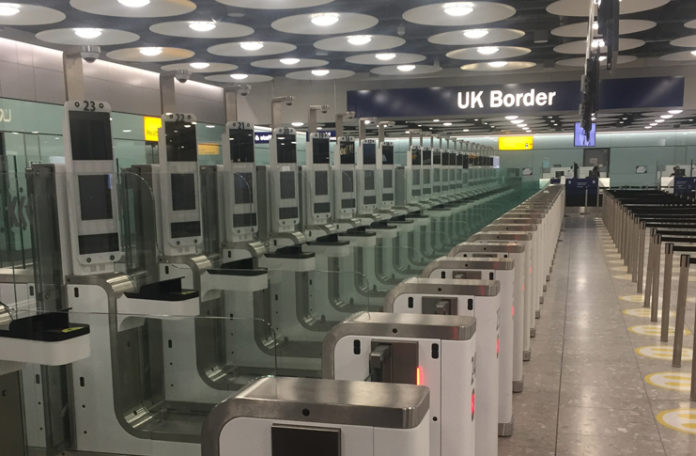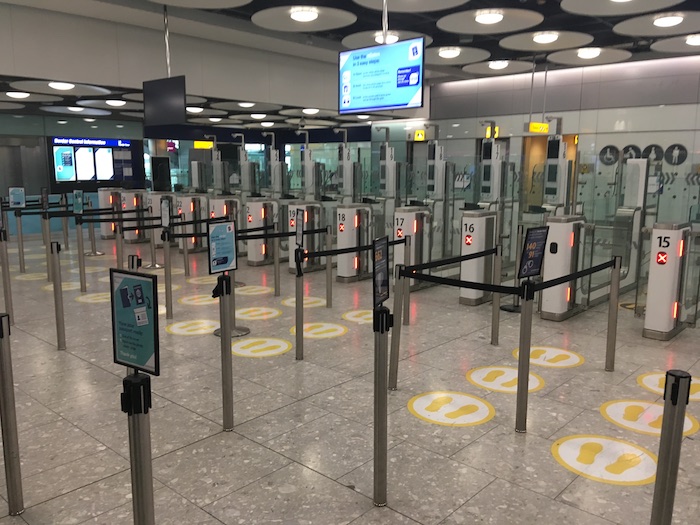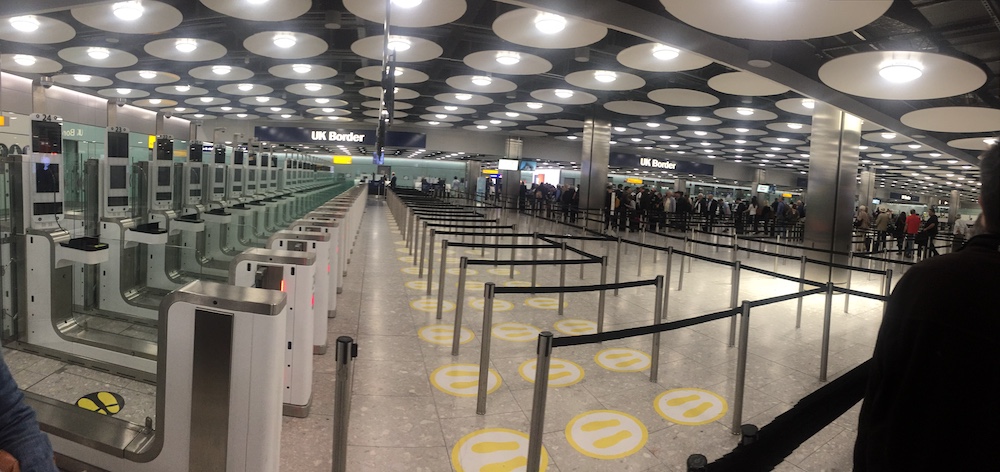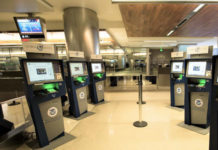
TravelingForMiles.com may receive commission from card issuers. Some or all of the card offers that appear on TravelingForMiles.com are from advertisers and may impact how and where card products appear on the site. TravelingForMiles.com does not include all card companies or all available card offers.
Some links to products and travel providers on this website will earn Traveling For Miles a commission that helps contribute to the running of the site. Traveling For Miles has partnered with CardRatings for our coverage of credit card products. Traveling For Miles and CardRatings may receive a commission from card issuers. Opinions, reviews, analyses & recommendations are the author’s alone and have not been reviewed, endorsed or approved by any of these entities. For more details please see the disclosures found at the bottom of every page.
One of the greatest additions to the world of travel was the introduction of the Global Entry program in the US because, for eligible travelers, it turned a long and boring wait in an immigration line into a procedure that generally takes no more than a couple of minutes.
The introduction of electronic immigration gates at London’s super-busy Heathrow airport was hailed as the UK’s answer to speeding up the process to enter the county, the end of long immigration lines (for eligible travelers) and it was supposed to be almost as revolutionary as Global Entry has been in the US. But it isn’t. It’s nowhere near as good as Global Entry and it turns out there’s a very good reason for this.
For a while, there was one thing about the immigration e-gates at Heathrow that I simply couldn’t understand: Why were all the e-gates not working all of the time? You don’t see Global Entry machines in the US switched off unless they’re broken, so why are so many immigration e-gates often not functioning in the UK?
There was a time (up to around 2 years ago) where all the e-gates would be switched off at 23:00 regardless of what aircraft were still waiting to land and scenes like this were common:
Nowadays you’ll find the immigration e-gates stay open past 23:00 but it’s still very common to arrive into Heathrow to find that most of the e-gates are not working…
 …and that all (eligible) arriving passengers are being routed to a few working machines at one end:
…and that all (eligible) arriving passengers are being routed to a few working machines at one end:

Sure, electronic machines will breakdown every now and again but this is ridiculous! It’s simply not plausible that two-thirds of all the e-gates are breaking down at the same time so what’s really going on?
Well, I’ve been pretty sure that I have known the answer for some time but it was only during my last pass through Heathrow (and another e-gate debacle) that I had the chance to confirm my suspicions with a UK immigration officer.
The UK immigration e-gates are not as automated as you may think. In fact, they’re really not very automated at all.
Where the Global Entry machines we’re used to seeing in the US are linked up to all kinds of central databases and involve no human border control involvement at all, the UK’s e-gates are all manually operated by UK immigration officers.
Because Global Entry requires an eligible traveler to pass through a number of background checks before he/she is cleared to use the system, and because the Global Entry machines take a scan of each passenger’s fingerprints, the whole process of entering into the US can be handled by machines and computers…and that makes it quite efficient.
Because there are no background checks on passengers who are eligible to use the UK’s immigration e-gates and because fingerprints are not taken, human intervention is required.
Every single person who passes through a UK immigration e-gate has their passport scanned and their photograph taken and all of that information is passed along to a row of computers in the immigration hall where UK immigration officers review it and then decide if the gates should open up and let the passenger pass or if the passenger should be rejected and sent to see a human immigration officer elsewhere in the arrivals hall.
Computers don’t make the decisions, humans do.

One immigration officer will be responsible for reviewing the information coming from multiple e-gates, so that explains why sometimes an e-gate opens up quickly (you’ve appeared on an immigration officer’s screen right away) and sometimes it can feel like it’s taking forever (you have to wait until an immigration officer gets around to viewing your data).
It also explains the “mystery” of the numerous e-gates that are often switched off.
At certain times of day (usually early morning and late evening) the immigration hall is being manned by a skeleton staff and the under-resourced immigration team doesn’t have enough manpower to cover all the e-gates…so a large number of them have to be switched off (in the days when all the gates were switched off at 23:00 it was because there weren’t enough officers on duty to man the e-gates and handle the passengers that needed manual processing).
No wonder the situation at the e-gates can be a mess!
Bottom Line
The next time you’re passing through Heathrow and encounter an immigration hall where most of the e-gates are switched off and there are hundreds of people ahead of you, don’t take your ire out on the staff – blame the UK government for not staffing the airport adequately and for not investing in technology that doesn’t require human intervention.















![Earn 20,000 bonus Amex points on Air France/KLM bookings [Targeted] a row of seats in a plane](https://travelingformiles.com/wp-content/uploads/2024/03/air-france-new-business-class-2-741-80x60.jpg)


This must be one of the silliest blog posts I have ever read. The two systems are not remotely comparable. The UK system is comparable to the US regular Immigration system. That system regularly and usually has lines between 1 and 4 hours long (at least at SFO). It involves being photographed and fingerprinted twice – once at the start of the line and once at the end, despite all the salient information being available through ATIS. And for a not insignificant proportion of people, being taken and locked in a side room for a few more hours. Whereas the UK system, at least at LHR T2 is available to most arriving passengers and rarely takes more than a couple of minutes.
The Global Entry system is completely different – it’s not available to large numbers of people, often for random reasons, it requires a lot of time, effort and money to get and is a wholly inadequate solution – amounting, in effect, to a form of extortion – to a major problem at US airports.
And that leaves aside the gross invasion of privacy involved by fingerprinting people.
[Edited from the original as I misread the comment to which I replied]
Considering the number of people that I meet who cannot understand why a system they believe to be automated is often only half working and not delivering the speed they were told it would, I think this post it appropriately informative.
Mate, you’ve completely misread the comment. He said the e-gates are available to most passengers arriving at T2. Not that T2 is available to most arriving passengers
And directly comparing it to Global Entry is indeed a ridiculous comparison.
Thanks for the heads up, I have amended my comment accordingly.
I can’t help but feel that the whole point of the post (the point that explains the title of the post) has been missed. The post is there to explain why the UK e-gates don’t operate as a lot of people think they do and why so many gates are often not working. The post does that so its aim is fulfilled.
Whether you think my discussion surrounding Global Entry is appropriate or not is secondary to the whole thing.